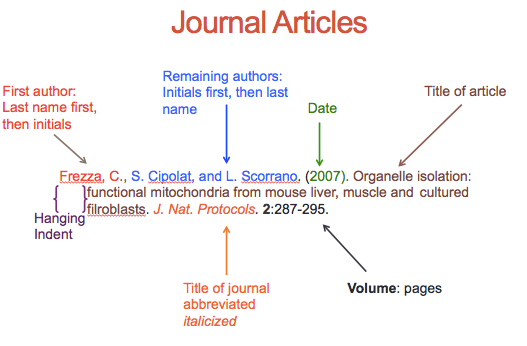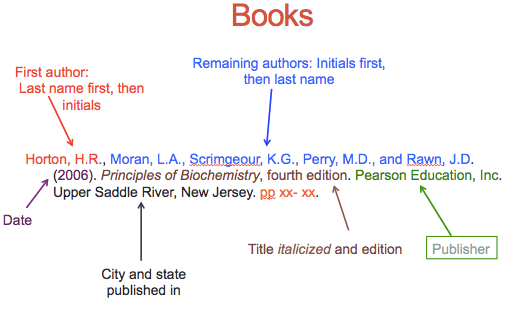One of the biggest challenge with lab reports is properly referencing your resources. You have to think about the quality of your reference, avoiding plagiarism, and how to format the reference itself.
Types of Literature:
Primary - original material
Examples - journal articles, thesis, conference proceedings
Secondary - interpretations and evaluations that are derived from or refer to primary sources
Examples - review articles, books, databases
Tertiary - distillation and collection of primary and secondary sources
Examples - encyclopedias, newspapers, textbooks
Pro Tips:
Include at least three references
Do Not Use: Wikipedia, online encyclopedias, non-credible websites
Acknowledgement is made twice:
1. In the body of your report
2. At the end of your report in the bibliography
Here's an example of how to put a citation in the body of the text using the author and the year that the resource was published.
In 1954, this organochloride pesticide was developed by Farbwerke Hoeschst in Germany and had the name Thiodan. Since then it has been used as a pesticide against pests and mites in both remote and densely populated areas such as Europe, India, China, China, Arctic, Canada, Brazil and the United States (Weber et. all 2010).
Here is an example of using a numbered approach.
As of 2010, 1 in 9 Canadian woman will develop breast cancer and 1 in 30 cases will result in death 2. After lung cancer, breast cancer is the most common death causing cancer in women2. Breast cancer is heterogeneous which makes it more fascinating to research but also harder to fight and treat 3.
At the end of your report, you will provide a complete list of references from your entire report. The list is usually alphabetical by first authors last name and includes all types of references (websites, journal articles, books etc). Your lab coordinator or supervisor will tell you how they want the references page formatted and often will say to copy the format that a certain journal uses.

Figure 1: Colour coded diagram on how to format a reference for Journal Articles

Figure 2: Colour coded diagram on how to format a reference for Books
The bibliography page can have alternate names such as Works Cited or References. Therefore, make sure you are following the format set by your lab coordinator or supervisor.
Figure 3. Example of Bibliography with alphabetical listing
Figure 4. Example of Bibliography with a numbering format
As you can see, each version has obvious and non-obvious differences. Be diligent and have someone look over your technique while you're learning.
For extra help on how to reference, contact your TA, lab coordinator, or visit the library and contact the Research Help Desk.